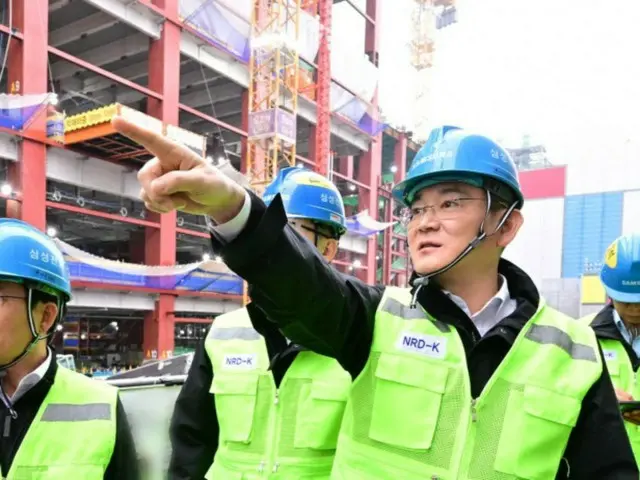The company is investing hundreds of trillions of won in facilities in Pyeongtaek and Yongin, Gyeonggi Province.
The plan is to increase the competitiveness of semiconductor contract manufacturing while concentrating cutting-edge processes and research and development (R&D) facilities within South Korea to maintain the technological "super gap" and reclaim the world's number one position in the semiconductor industry.
According to industry sources, Samsung Electronics plans to use the semiconductor subsidies it has received from the U.S. to focus on domestic investment as well as additional investment in the U.S.
Yongin will invest 300 trillion won (US$333 billion) to build the world's largest system of 7.1 million square meters by 2042.
The cluster will house five cutting-edge semiconductor manufacturing plants and attract 150 materials, parts, equipment, and fabless (semiconductor design) companies.
In Pyeongtaek, the company is also building six semiconductor lines on a site of 2.89 million square meters. The Pyeongtaek plant will house a mix of memory and foundry lines. Samsung Electronics has not yet disclosed the exact investment amount.
The amount has not been made public, but considering that each factory receives approximately 30 trillion won (approximately 3.33 trillion yen), this works out to approximately 180 trillion won (approximately 20 trillion yen) being poured into Pyeongtaek as well.
In order to smoothly implement its large-scale investment plan, Samsung Electronics posted an operating loss of 14.8794 trillion won (US$16.5 billion) in its semiconductor business alone last year, but managed to reduce its investment by 48%.
Samsung Electronics is expected to continue this aggressive investment this year, spending 372.3 billion won (about 5.37 trillion yen) on the 2020 budget, increasing its investment by 500.6 billion won (about 55.6 billion yen) from 2022.
Samsung Electronics plans to build a total of 11 factories in the U.S., and the subsidy from the U.S. will give it greater flexibility in managing its finances, allowing it to further focus on domestic investment.
"The subsidy from the U.S. is a good opportunity for Samsung Electronics to invest in Korea," said Kim Yangpaon, a researcher at the Korea Institute for Industrial Economics and Trade.
Samsung Electronics is expected to concentrate cutting-edge processes and R&D below 2 nanometers in Korea.
Due to local government policies, the Taylor plant in Texas, which is currently under construction, is also planning to produce 2-nanometer products, but it is highly likely that products with narrower line widths will be manufactured in Korea.
"It is common for cutting-edge facilities to be built in South Korea, which is the safest place," said an industry source. "The U.S. is demanding that we produce cutting-edge chips domestically."
"It's a policy, but there will be room for negotiation," Kim said. "If we build cutting-edge facilities overseas and the technology leaks out, Korea's competitive edge as a leader in the industry will disappear," he said.
"We need to find ways to protect Korea's competitiveness, such as by developing the facilities at different levels and relocating them in the future, and we need to coordinate our views with the US," he said.
Samsung Electronics has taken the number one position in semiconductor sales by developing cutting-edge technology and leading the market with aggressive investments at home and abroad.
According to market research firm Omdia, Samsung Electronics' semiconductor sales last year were $44.474 billion, ranking third. The top spot was $51.197 billion.
In second place was Intel, which had sales of $7.9 trillion (approximately 7.9 trillion yen), followed by Nvidia, which has benefited greatly from artificial intelligence (AI). Samsung Electronics was in first place in the previous fiscal year of 2022.
However, it was hit hard by the memory cold wave last year. Furthermore, Samsung Electronics' aggressive investment led it to overtake US memory company Micron and Chinese manufacturer YMTC,
The aim is to close the gap with Taiwan's TSMC, which is ranked first in the foundry sector. Kim Hyun Joo, head of the Next Generation Smart Semiconductor Business Group (professor emeritus at Seoul University), said, "Samsung Electronics is looking to make further advances."
"To take a leap forward, we need to develop cutting-edge technology domestically, secure big customers and mass-produce," he said, adding, "The most important thing is technology."
2024/04/16 07:03 KST
Copyrights(C) Edaily wowkorea.jp 107

